The Shimpaku Juniper Bonsai is truly a sight to behold. With its trained trunk line and abundance of foliage, it captivates bonsai enthusiasts with its stunning aesthetic appeal. One of the defining features of this bonsai variety is its contorted trunk, which adds a sense of character and age to the tree. The scale-like leaves of the Shimpaku Juniper Bonsai further enhance its unique appearance, giving it a lush and vibrant presence.
Key Takeaways:
- Understanding the appearance of Shimpaku Juniper Bonsai and its contorted trunk and scale-like leaves.
- Providing the right amount of sunlight, with at least six to eight hours of direct sunlight daily.
- Watering tips to keep the soil consistently moist without overwatering and ensuring adequate drainage.
- Fertilizing techniques, including the use of slow-release organic fertilizer during the growing season.
- Potting recommendations, such as repotting every two to five years and using natural materials like clay pots.
Appearance of Shimpaku Juniper Bonsai

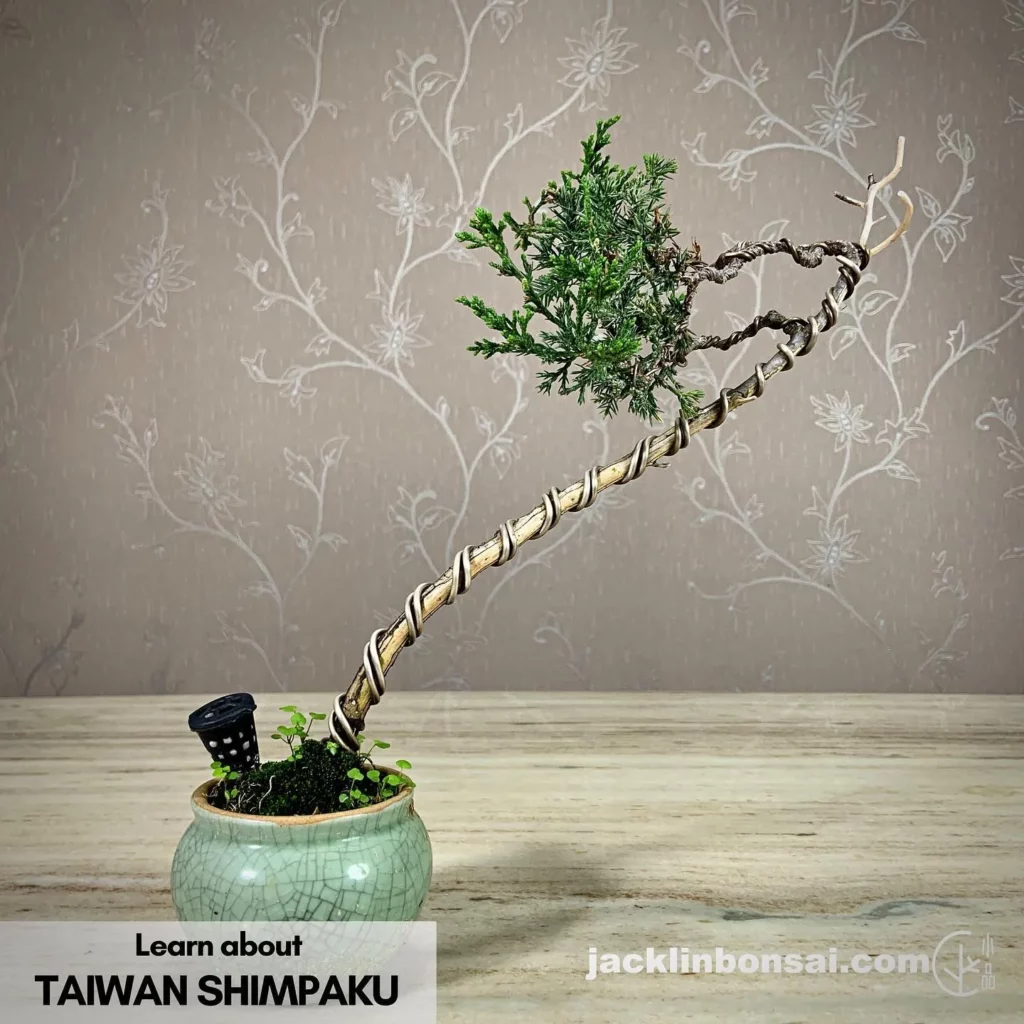
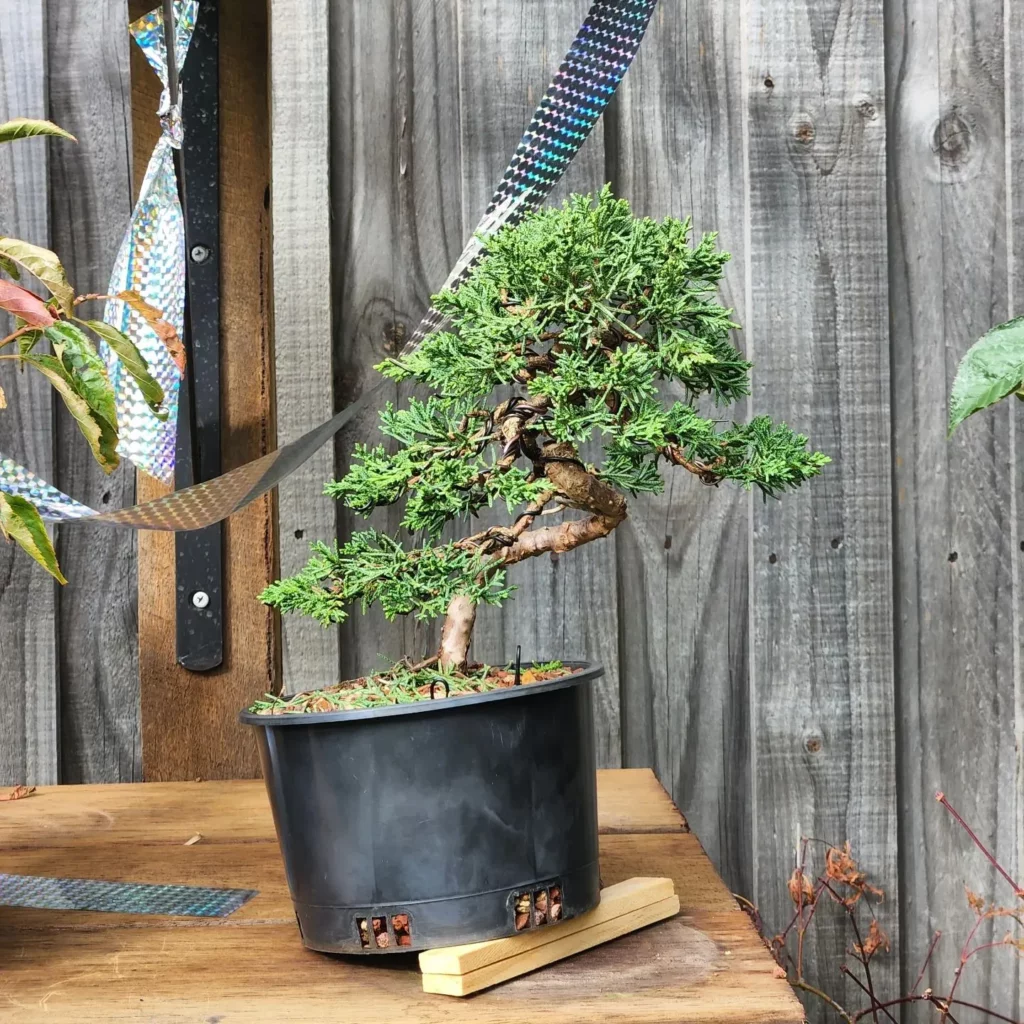
When it comes to design, the branches of the Shimpaku Juniper Bonsai are highly malleable. They can be wired and shaped, allowing bonsai enthusiasts to create beautiful and artistic designs. The trained branches can be positioned in a way that adds visual interest and balance to the overall composition of the bonsai. Whether you prefer a traditional and symmetrical style or a more dynamic and irregular design, the Shimpaku Juniper Bonsai offers endless possibilities.
Gorgeous Contorted Trunk
- The Shimpaku Juniper Bonsai boasts a contorted trunk that adds character and visual interest to the tree.
- The trunk’s unique twists and turns give the bonsai a sense of age and maturity.
Lush Scale-Like Leaves
- The scale-like leaves of the Shimpaku Juniper Bonsai create a dense and foliage-rich appearance.
- The vibrant green color of the leaves adds a fresh and lively touch to the overall aesthetic.
Malleable Branches for Artistic Designs
- The branches of the Shimpaku Juniper Bonsai can be wired and shaped, allowing for artistic expression and creativity.
- They can be positioned to create a visually pleasing balance and composition.
Light Requirements for Shimpaku Juniper Bonsai
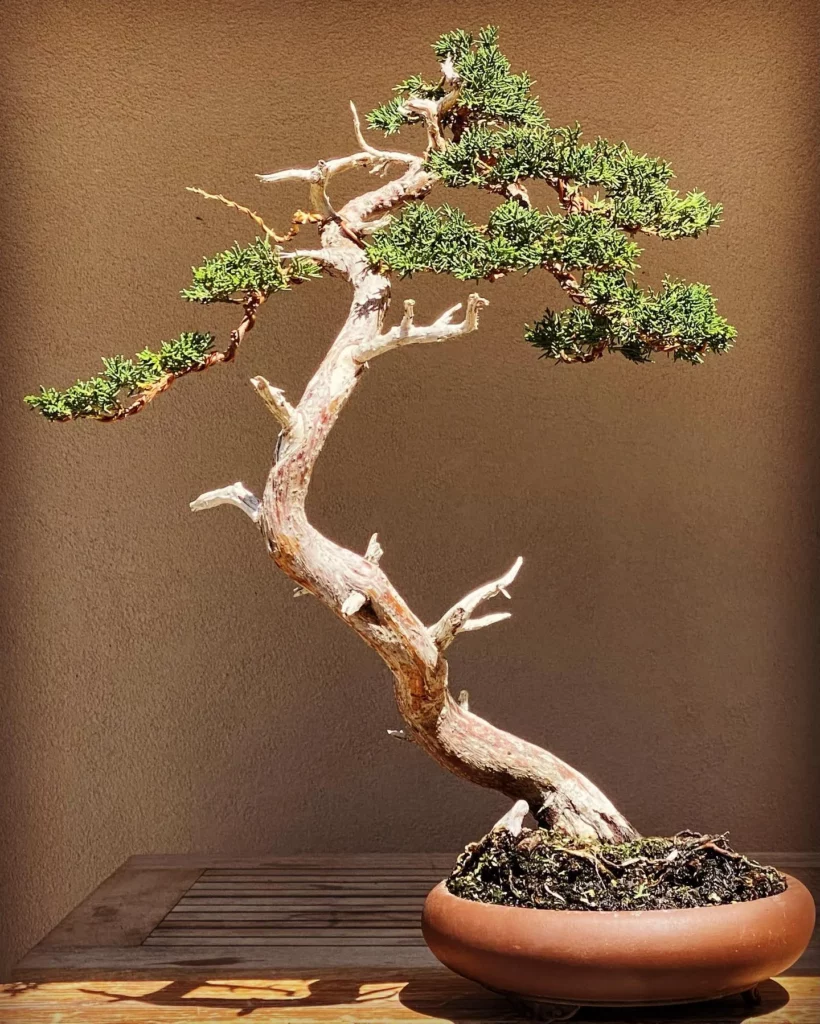
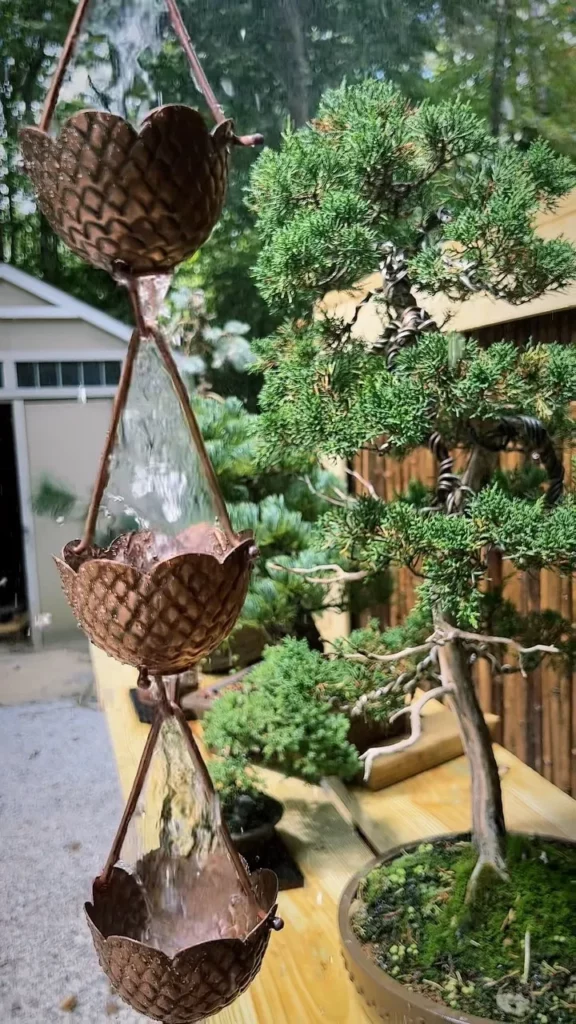
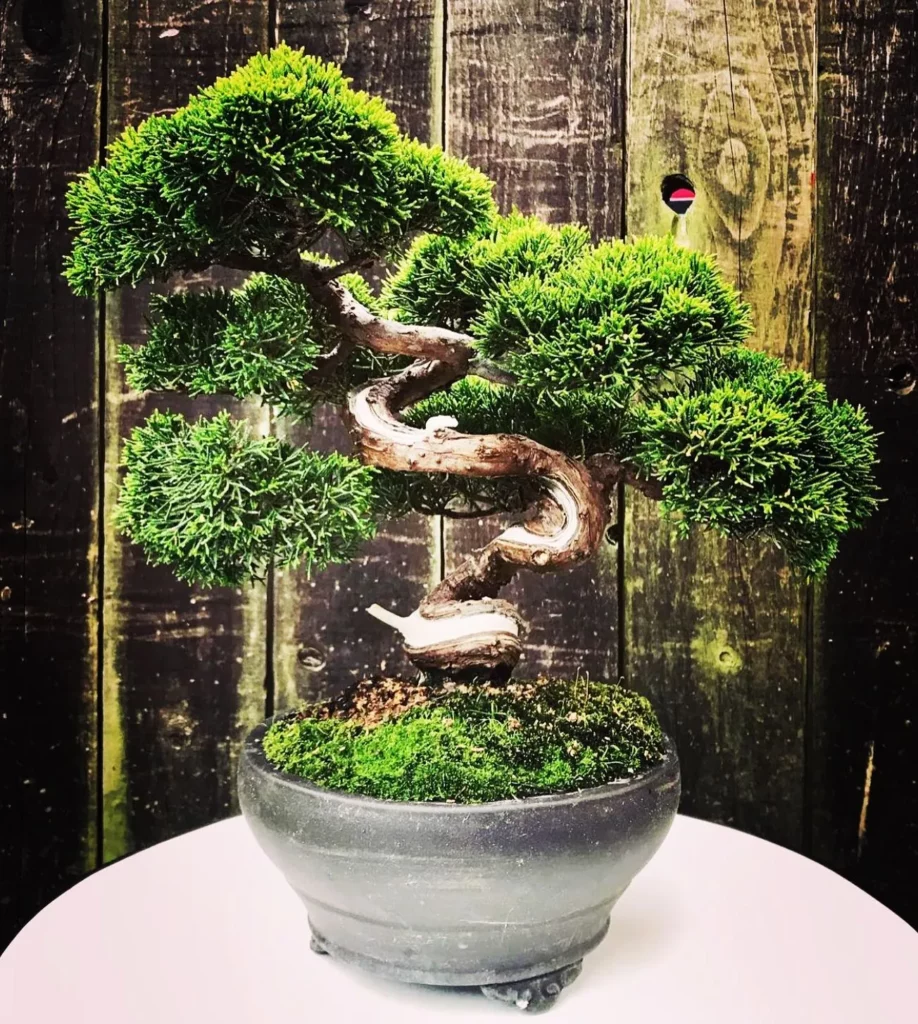
Proper lighting is essential for the healthy growth and development of Shimpaku Juniper Bonsai. This beautiful bonsai variety thrives in direct sunlight and requires a minimum of six to eight hours of full sunlight daily. Placing your Shimpaku Juniper Bonsai outdoors is highly recommended, as it allows the tree to experience the natural seasonal changes it needs to thrive.
If you choose to grow your Shimpaku Juniper Bonsai indoors, it is crucial to provide it with adequate light. Place the bonsai near a south-facing window, where it can receive the maximum amount of sunlight. You may also consider using artificial grow lights to supplement the natural lighting.
Here are some essential light requirements for Shimpaku Juniper Bonsai:
- Place your bonsai in a location that receives at least six to eight hours of direct sunlight daily.
- If growing indoors, position the bonsai near a south-facing window or use artificial grow lights.
- Ensure the bonsai receives the necessary seasonal changes by placing it outdoors whenever possible.
Watering Tips for Shimpaku Juniper Bonsai
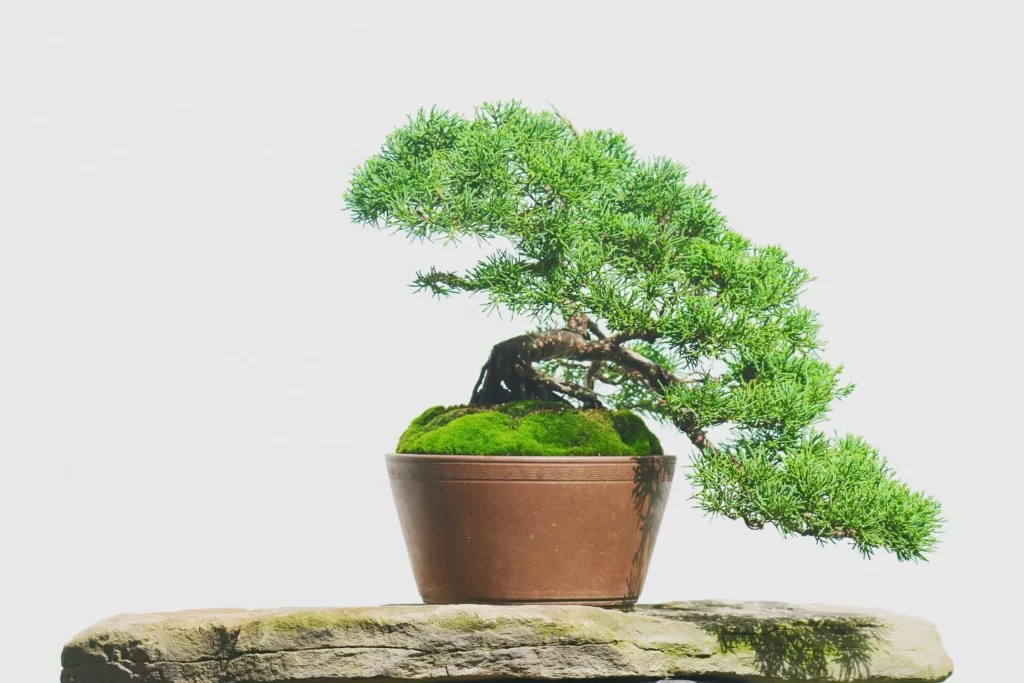
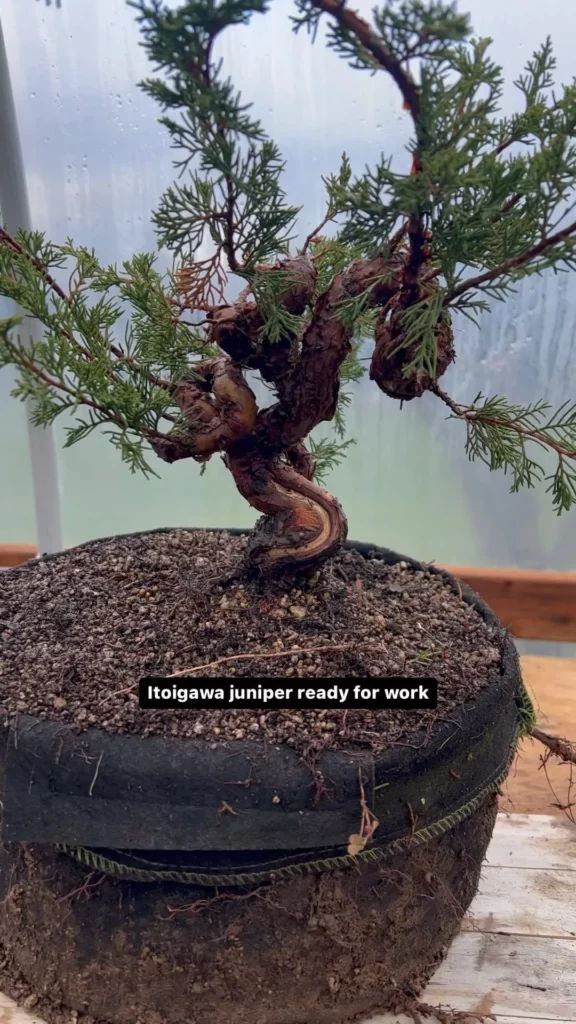
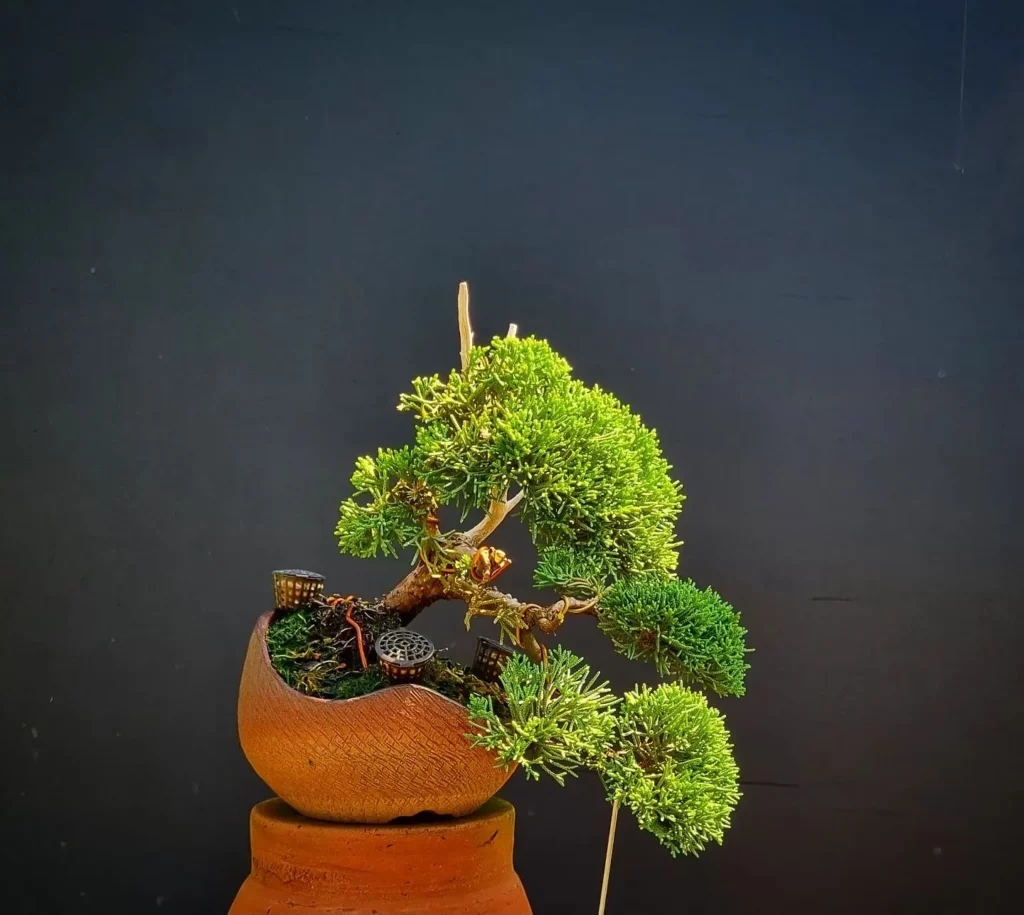
Proper watering is crucial for the health and vitality of your Shimpaku Juniper Bonsai. Here are some essential watering tips to keep in mind:
- Monitor moisture levels: Check the moisture level of the soil regularly by inserting your finger about an inch deep. If it feels dry, it’s time to water.
- Avoid overwatering: While it’s important to keep the soil consistently moist, overwatering can lead to root rot and other issues. Allow the soil to dry slightly between waterings but make sure it never fully dries out.
- Water thoroughly: When watering your Shimpaku Juniper Bonsai, ensure that water reaches all areas of the root system. Slowly pour water onto the soil until it starts to drain from the drainage holes at the bottom of the pot.
- Use filtered or rainwater: If possible, use filtered or rainwater for watering your bonsai. Tap water can contain chlorine and other chemicals that may be harmful to the tree over time.
Watering frequency
The watering frequency for your Shimpaku Juniper Bonsai depends on various factors, including the climate, humidity levels, and the size of the pot. As a general guideline, water your bonsai every 2-3 days during hot, dry weather, and every 4-7 days during cooler months. However, always rely on the moisture level of the soil as the ultimate indicator of when to water.
Drainage is key
Ensuring proper drainage is essential to prevent waterlogging and root rot. Make sure your bonsai pot has sufficient drainage holes at the bottom. Adding a layer of bonsai soil or small stones at the bottom of the pot can further improve drainage.
Fertilizing Shimpaku Juniper Bonsai
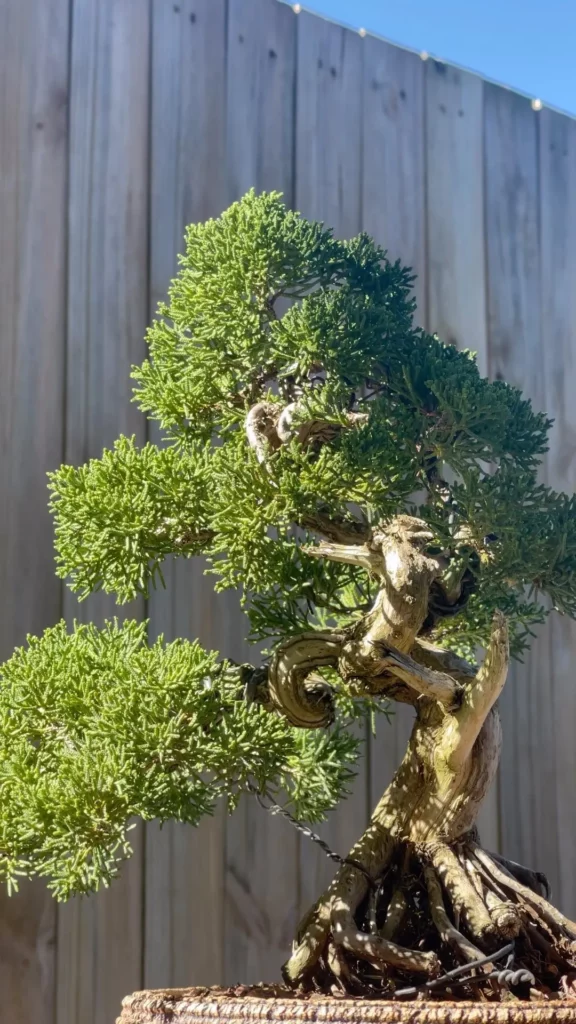
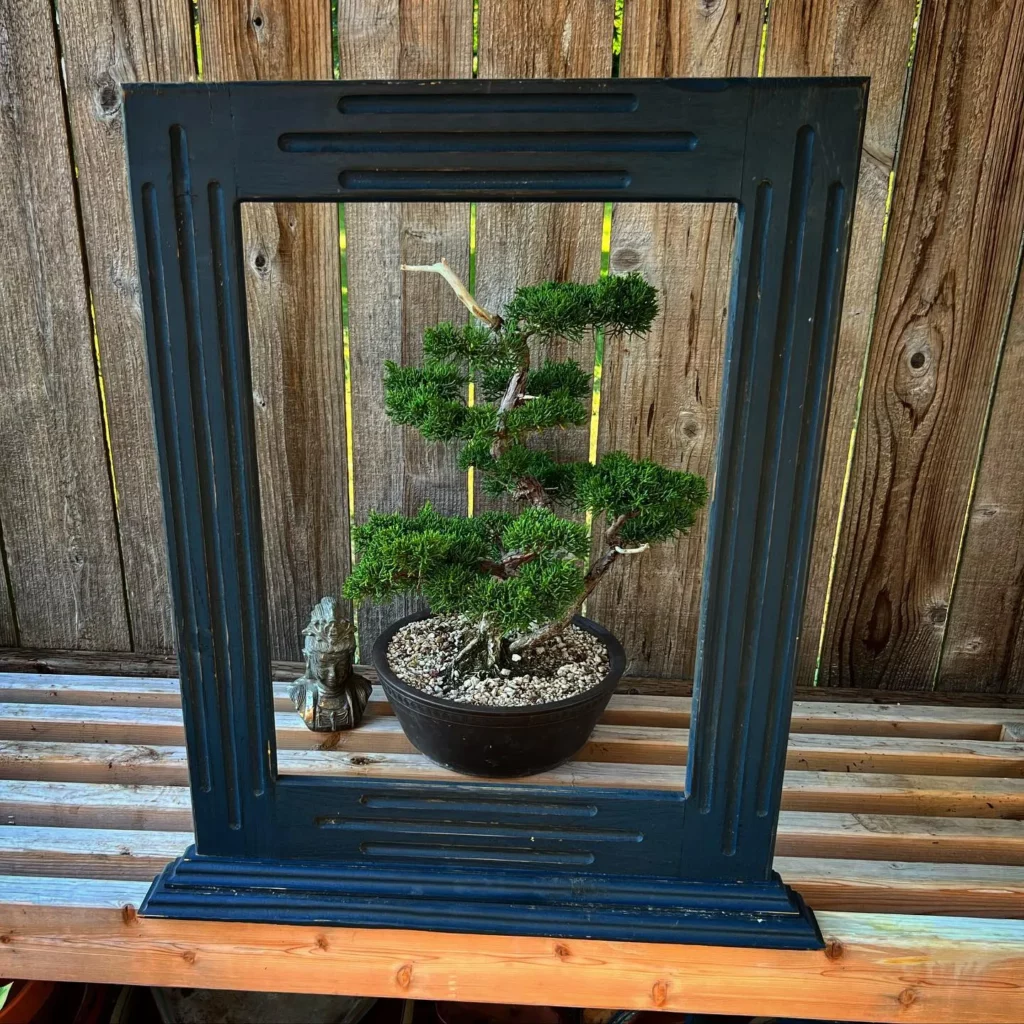
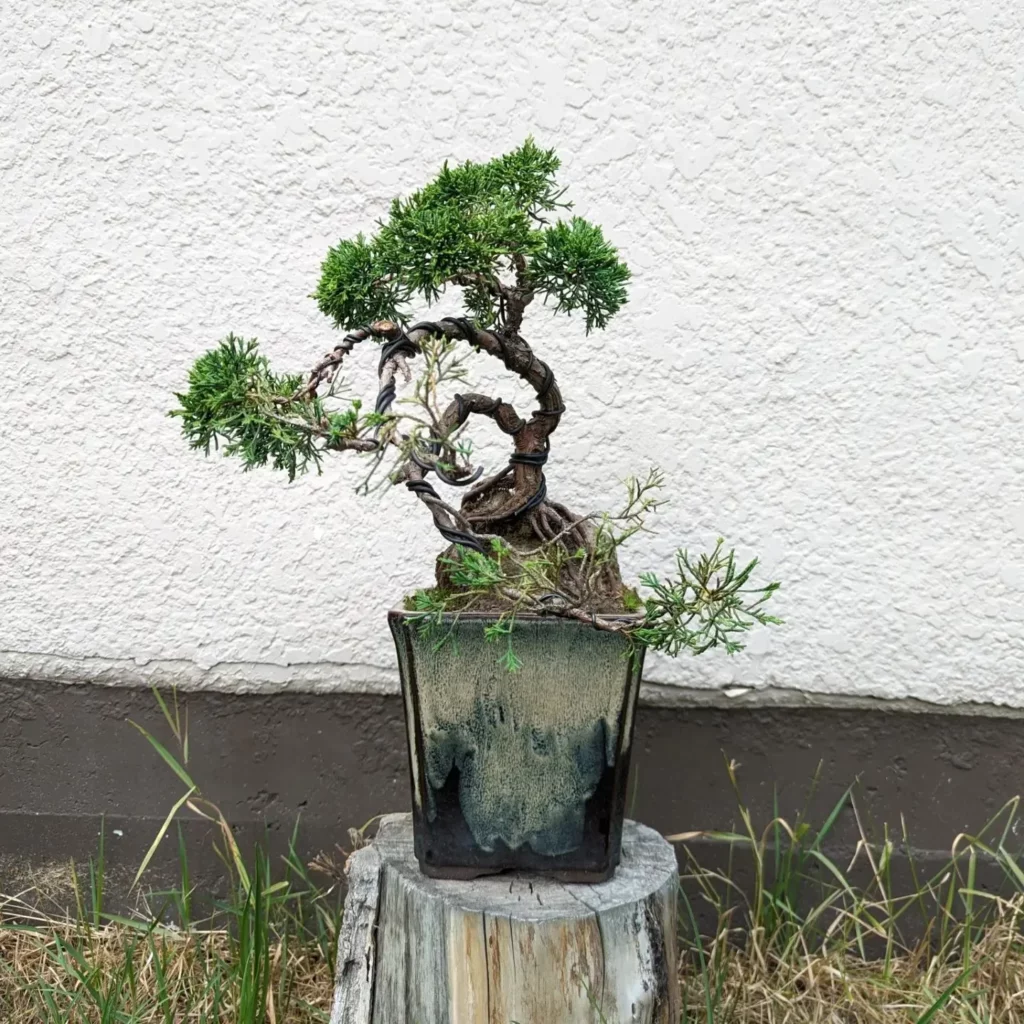
Proper fertilization is vital for the health and growth of your Shimpaku Juniper Bonsai. By providing the right nutrients, you can ensure that your bonsai tree thrives and maintains its stunning appearance.
Here are a few essential tips for fertilizing your Shimpaku Juniper Bonsai:
1. Select the right fertilizer
When choosing a fertilizer for your Shimpaku Juniper Bonsai, opt for a balanced, slow-release organic fertilizer. This type of fertilizer gradually releases nutrients over time, providing a steady supply without the risk of over-fertilization. Look for a fertilizer specifically formulated for bonsai trees and follow the manufacturer’s instructions for application rates.
2. Apply fertilizers during the growing season
It’s important to apply fertilizer during the growing season to support the active growth of your Shimpaku Juniper Bonsai. Generally, this occurs in spring and early summer. Avoid fertilizing during the winter months when the tree is dormant. Applying fertilizer during the correct season ensures that your bonsai receives the necessary nutrients to thrive.
3. Maintain a regular feeding schedule
To promote healthy growth, establish a regular feeding schedule for your Shimpaku Juniper Bonsai. Slow-release fertilizers can be applied once a month, while liquid fertilizers can be used weekly when watering. Consistency in feeding helps maintain a balanced nutrient intake for your bonsai tree.
Potting Techniques for Shimpaku Juniper Bonsai
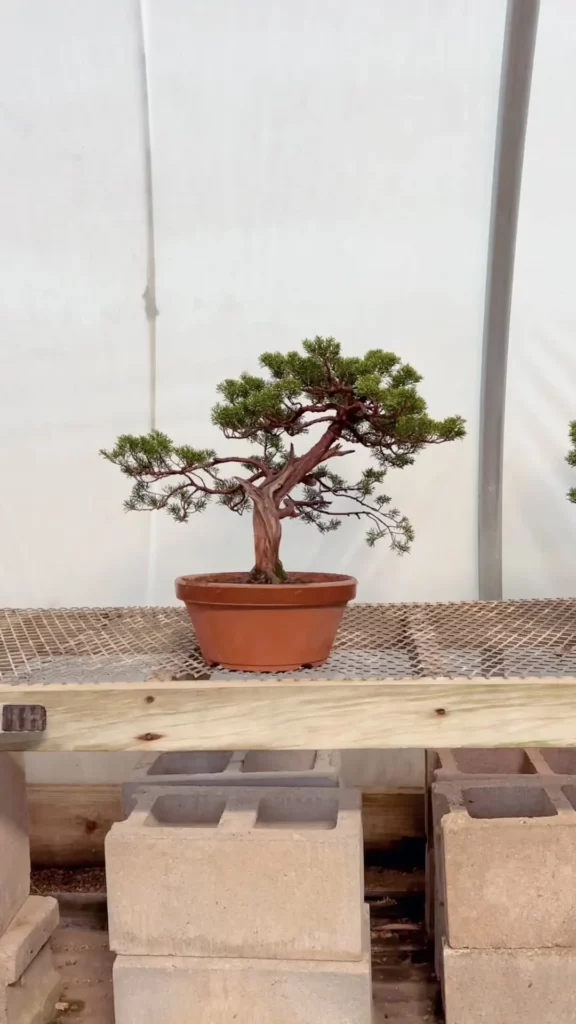
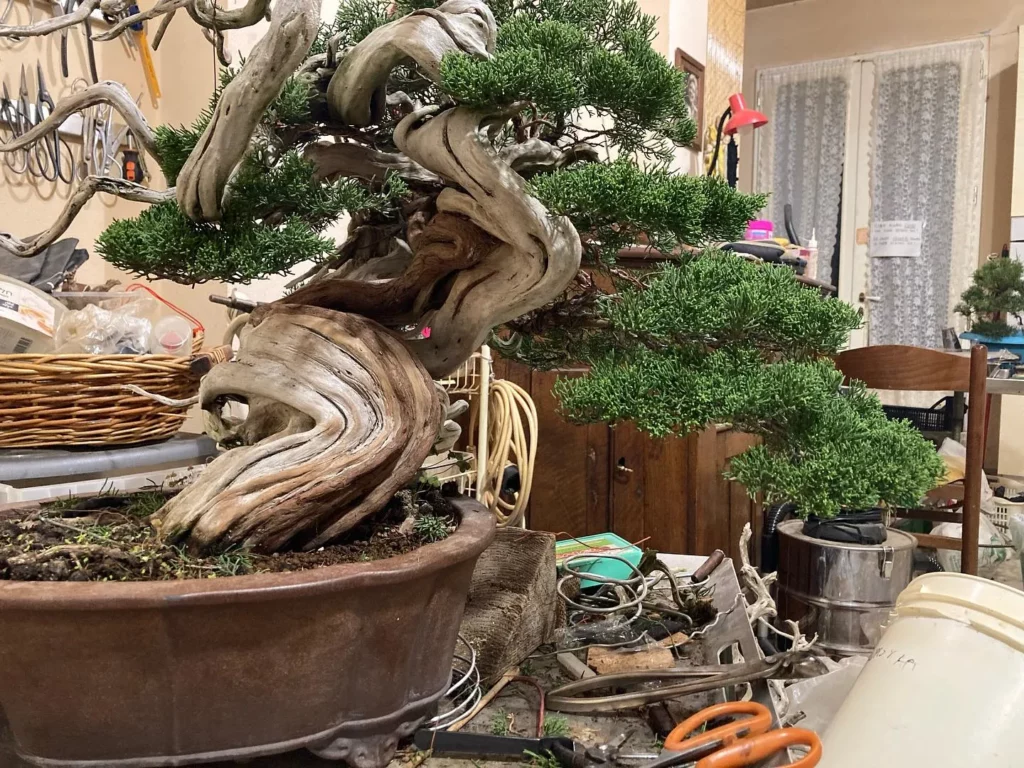
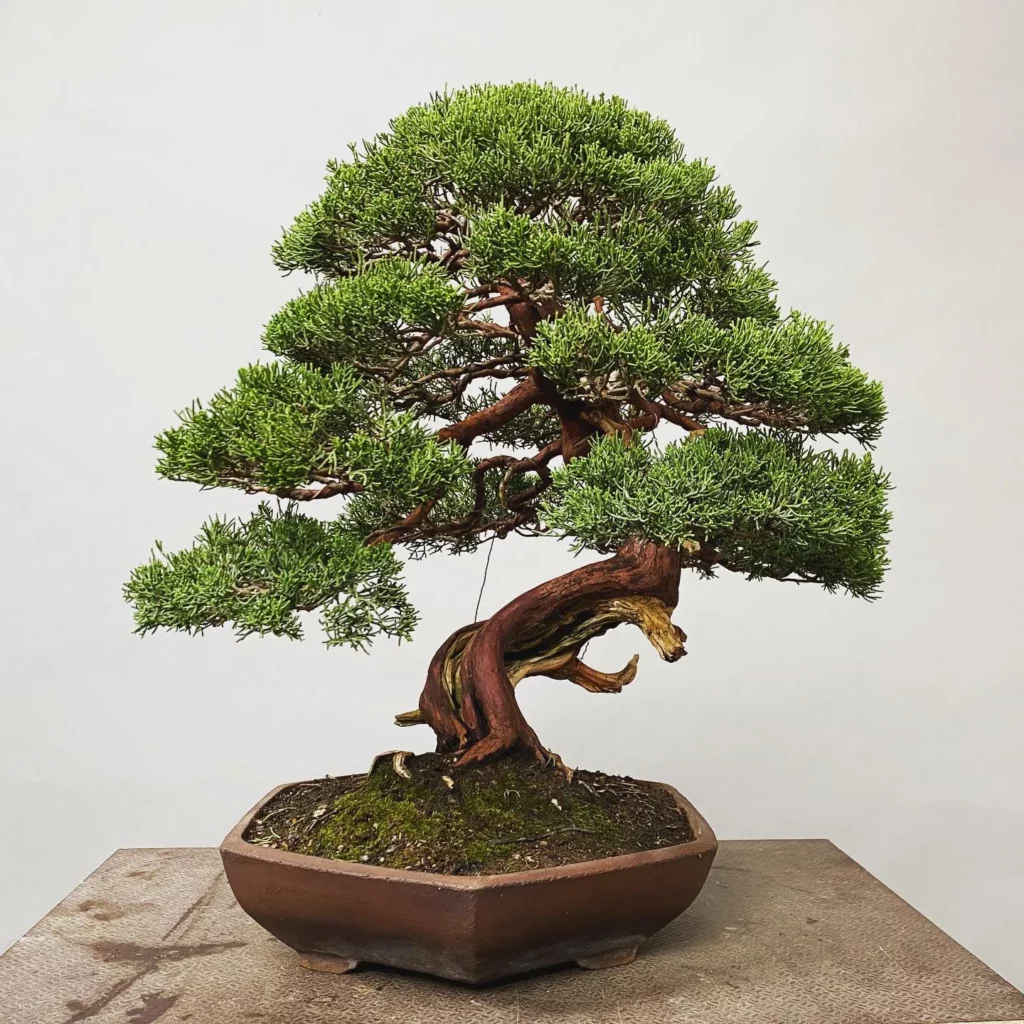
Potting is an important aspect of caring for your Shimpaku Juniper Bonsai. Here are some potting techniques to ensure the health and vitality of your bonsai:
1. Repotting Frequency
Shimpaku Juniper Bonsai does not require frequent repotting. Young trees can be repotted every two years, while older, more established trees can go up to five years without repotting. This allows the tree’s roots to develop and spread naturally.
2. Light Root Pruning
When repotting your Shimpaku Juniper Bonsai, it is essential to practice light root pruning to avoid shocking the plant. Remove only a small portion of the root mass, focusing on the more vigorous and thicker roots. This will allow for the development of finer feeder roots, which are crucial for nutrient uptake.
3. Choosing the Right Pot
Natural materials such as clay or terra-cotta pots are recommended for potting Shimpaku Juniper Bonsai. These materials are porous and provide better airflow to the roots, promoting healthy growth. Additionally, choose a pot that is proportionate to the size and age of your bonsai tree. The pot should have adequate drainage holes to prevent waterlogging.
4. Proper Potting Mix
When potting your Shimpaku Juniper Bonsai, ensure you use a well-draining bonsai soil mix. This mix typically consists of a combination of akadama, pumice, and lava rock. The right soil mix allows for proper water retention and aeration, preventing root rot and ensuring optimal growth.
Propagating Shimpaku Juniper Bonsai
Propagating Shimpaku Juniper Bonsai is a rewarding and cost-effective way to expand your collection. By taking cuttings from well-established and mature plants, you can create new bonsai trees that will inherit the unique characteristics of the parent plant.
Here are some simple steps to guide you through the propagation process:
1. Choosing the Right Time and Materials
The best time to take cuttings from your Shimpaku Juniper Bonsai is during the late spring or summer months when the plant is actively growing. Select healthy branches with desirable characteristics, such as compact growth and well-defined foliage. Use clean and sharp pruning shears or scissors to make clean cuts and minimize damage to the parent plant.
2. Preparing the Cuttings
Trim the selected branches into manageable lengths, typically around 4 to 6 inches long. Remove the lower foliage, leaving only a few pairs of leaves at the tip. This helps redirect the plant’s energy towards root development. Optionally, you can apply a rooting hormone to promote faster root growth, although it is not necessary for Shimpaku Juniper Bonsai.
3. Creating the Ideal Growing Environment
Fill a well-draining container with bonsai soil or a mixture of coarse sand and peat moss. Moisten the soil, ensuring it is evenly damp but not soaking wet. Make small holes in the soil and plant the cuttings, gently pressing the soil around them for stability. Place the container in a sunny and warm spot, preferably outdoors, with indirect sunlight to encourage root growth.
4. Caring for the Cuttings
Keep the soil consistently moist but avoid overwatering, as excessive moisture can lead to root rot. Mist the cuttings periodically to maintain humidity levels, especially during hot and dry weather. Monitor the cuttings for any signs of pests or diseases and take appropriate measures if necessary. It usually takes several weeks for the cuttings to establish roots, so be patient and give them time to grow.
- Choose healthy branches with desirable characteristics
- Trim branches into manageable lengths and remove lower foliage
- Plant cuttings in well-draining soil and provide adequate sunlight
- Maintain consistent moisture levels and monitor for pests or diseases
Growth and Development of Shimpaku Juniper Bonsai
Proper care and maintenance are crucial for the growth and development of your Shimpaku Juniper Bonsai. Regular pruning and shaping are essential for maintaining its aesthetic appeal and overall health. Pruning should be done during the active growing period in the early spring and summer.
When pruning, remove any dead or yellowing foliage and trim back long branches to encourage a more compact growth habit. This will help maintain the desired shape and ensure that sunlight reaches all parts of the bonsai. Additionally, wiring is a common technique used to achieve specific shapes and angles, allowing you to create a truly unique and stunning bonsai.
Key Points:
- Regular pruning and shaping are essential for the growth and development of Shimpaku Juniper Bonsai.
- Prune during the active growing period in the early spring and summer.
- Remove dead or yellowing foliage and trim back long branches to maintain the desired shape.
- Wiring can be used to achieve specific shapes and angles.
In addition to pruning, providing your Shimpaku Juniper Bonsai with the right growing conditions is crucial. It thrives in full sunlight and requires at least six to eight hours of direct sunlight daily. However, it can also tolerate indoor growing if provided with adequate light.
Dealing with Pests and Diseases in Shimpaku Juniper Bonsai
When it comes to keeping your Shimpaku Juniper Bonsai healthy and thriving, pests and diseases can sometimes pose a challenge. While these bonsai trees are generally hardy and resistant, it’s important to be aware of the potential issues and take appropriate measures. One common pest that may affect your Shimpaku Juniper Bonsai is the spruce spider mite. These tiny creatures can cause damage by sucking sap from the leaves, leading to discoloration and stunted growth.
To tackle these pesky pests: Regularly inspect your bonsai for any signs of spider mite infestations. If you spot any, gently spray the affected areas with water to dislodge and control the mites. Additionally, keeping the foliage well-hydrated by misting it can prevent infestations. Remember to take preventive measures by maintaining good ventilation and avoiding overwatering, as spider mites thrive in dry conditions.
Fungal diseases, such as blight and rust, may also pose a threat to your Shimpaku Juniper Bonsai. To prevent these diseases, it’s important to ensure proper placement and care of your bonsai. Avoid placing it in shaded or poorly drained areas, as these conditions can promote fungal growth. If you do notice signs of fungal infection, such as discolored or wilting foliage, it’s crucial to take action promptly.
To combat fungal diseases: Prune affected branches or foliage to limit the spread of the infection. It’s also recommended to apply a suitable fungicide, following the manufacturer’s instructions, to protect your bonsai from further damage. Remember to maintain proper sanitation practices, such as cleaning tools after use and removing fallen leaves, to prevent the recurrence of fungal diseases.
FAQ
How often should I water my Shimpaku Juniper Bonsai?
Shimpaku Juniper Bonsai requires regular watering to keep the soil consistently moist. The soil should be allowed to dry slightly between waterings, but not completely. Be careful not to overwater, as it can lead to root rot.
How often should I fertilize my Shimpaku Juniper Bonsai?
Shimpaku Juniper Bonsai benefits from regular feeding during the growing season. Slow-release organic fertilizer can be applied once a month, or a liquid fertilizer can be used weekly when watering. It is important to avoid fertilizing during the winter months and to wait at least a month after repotting before fertilizing.
How often should I repot my Shimpaku Juniper Bonsai?
Young trees can be repotted every two years, while older trees can go up to five years without repotting. When repotting, it is important to avoid heavy root pruning to prevent shocking the plant. Natural materials like clay or terra-cotta pots are recommended for potting.
Can I grow a Shimpaku Juniper Bonsai indoors?
While Shimpaku Juniper Bonsai is best suited for outdoor growth, it can tolerate indoor growing if provided with adequate light. It requires at least six to eight hours of full sunlight daily.
How can I propagate my Shimpaku Juniper Bonsai?
Shimpaku Juniper Bonsai can be propagated through cuttings. Cuttings should be taken from well-established and mature plants during the late spring and summer months. The cuttings should be placed in a well-draining container with bonsai soil and kept in a sunny and warm spot. Once the cuttings have established roots, they can be transplanted into individual containers.
When should I prune my Shimpaku Juniper Bonsai?
Pruning should be done during the active growing period in the early spring and summer. Regular pruning and shaping are essential for the bonsai’s aesthetic and health. Wiring is also a common technique to achieve desired shapes and angles.
What pests and diseases should I watch out for in my Shimpaku Juniper Bonsai?
Shimpaku Juniper Bonsai is generally not affected by many pests but can be prone to spruce spider mite infestations. Regular inspection and spraying with water can help control these pests. The bonsai can also face fungal diseases such as blight and rust, which can be prevented by proper placement and care to avoid shaded or poorly drained areas. Fungicides can be used if necessary.




